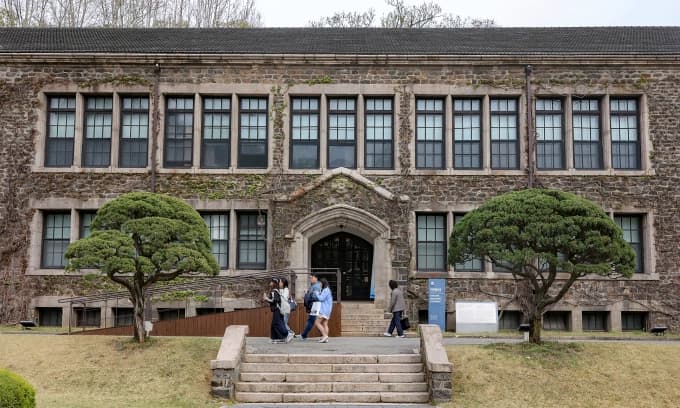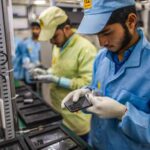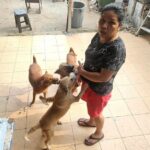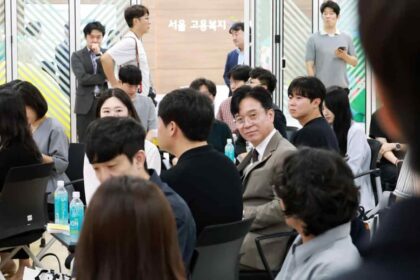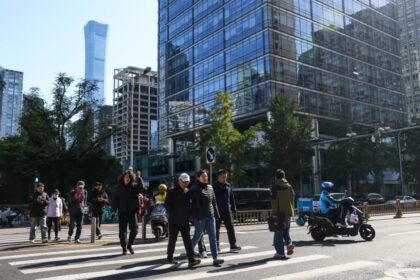A milestone for Korea and a new leader among senders
South Korea has crossed a new threshold in international education, enrolling 305,329 foreign students as of August 2025 and reaching its national target of 300,000 two years ahead of schedule. Official immigration data show that Vietnam is now the top source of overseas students in the country with 107,807 enrolments, ahead of China with 86,179. Together, the two countries account for roughly 64 percent of all international students in Korea. The total student body is up 16 percent from one year earlier and 47 percent from mid 2023, marking the first time foreign enrolment has surpassed 300,000.
- A milestone for Korea and a new leader among senders
- Why Vietnamese students are choosing Korea
- A shifting map of origins on Korean campuses
- How universities and recruiters are building pipelines in Vietnam
- Benefits and pressures for both countries
- How Korea compares with other destinations for Vietnamese students
- What the numbers say about 2025 and what might come next
- Key Points
The majority of students, 225,769, hold D 2 visas for degree programs. Another 79,500 are on D 4 1 visas for Korean language training, and a much smaller number are in other language tracks. Uzbekistan, Mongolia, and Nepal complete the top five sending countries with five figure cohorts, reflecting the rapid diversification of international classrooms across Korea.
Policy changes have made Korea more attractive. Students can now work more hours during term time, financial thresholds for visas have been lowered, post graduation stay rules have been extended, and scholarships have expanded. These moves, combined with the rise of Korean universities in international rankings and strong industry ties, have created a compelling case for students from Vietnam and across Asia.
Why Vietnamese students are choosing Korea
Vietnamese families place high value on education, and rising incomes allow more students to consider study abroad. Korea offers quality universities, proximity to home, and a growing set of English medium programs. Tuition and living costs can be lower than in English speaking destinations for comparable programs, especially outside Seoul. Cultural familiarity, the influence of Korean music, film, and fashion, and the large presence of Korean companies in Vietnam also carry weight. These factors align with more flexible work options and clearer residency pathways introduced since 2023.
Costs, work rules, and residency
Work regulations now give students more legal hours and clearer schedules. Language students and undergraduates can work up to 25 hours per week during the semester, while masters and doctoral students can work up to 35 hours. Weekend and public holiday hours are unrestricted, subject to labor rules and employer compliance. The required proof of funds was reduced from 26 million won to 20 million won for most institutions, and to 16 million won for schools outside Seoul, easing entry for students who budget carefully or plan to supplement income with part time work.
Post graduation stay options have been extended. Graduates can now remain for up to three years to seek jobs and start careers, with the possibility of extending for two additional years under certain conditions. Korea has also indicated plans to open more industries to foreign talent and to lengthen residence periods that count toward permanent settlement for qualified graduates.
Scholarships and language flexibility
The Global Korea Scholarship has grown, with 2,700 awards reserved for students in science, technology, engineering, and mathematics and about 6,000 for other fields. STEM graduates receive priority consideration for permanent residency. Universities are recognizing more Korean language tests and are considering lower thresholds for language proficiency such as TOPIK at admission for some programs. Experts warn that reduced language requirements can strain academic performance. The data suggest that universities will need to scale advising, tutoring, and bridging courses if proficiency thresholds are lowered.
When combined, these changes make Korea a strong value proposition for Vietnamese applicants who want high quality programs, a chance to earn income during study, and a realistic path to stay and work after graduation.
A shifting map of origins on Korean campuses
Chinese students once dominated international cohorts in Korea. The latest data show a more balanced picture, with Vietnam now the leading sender and strong growth from Central and South Asia. A decade ago, few institutions had large international footprints. Recent figures show that at 12 Korean universities international students now represent more than 20 percent of total enrolment, a share that was virtually unheard of ten years ago. The pool of home countries represented has widened from 141 to 155, signaling broader reach and diversified recruitment.
This shift is reshaping campus services. Universities are adding language support, career counseling that links to both domestic and regional labor markets, and expanded dormitory or housing partnerships. Institutions outside Seoul, which benefit from lower financial requirements for visas, are stepping up marketing and adding programs tailored to international demand.
Degree versus language study
About two thirds of international students in Korea are enrolled in degree programs on D 2 visas and just over a quarter are in Korean language training on D 4 1 visas. Many students start with intensive language study, then transition to bachelors or graduate programs. This pathway allows students to build strong foundations for coursework, internships, and job searches. The pipeline approach is especially common among Vietnamese students who plan multi stage education and career moves that include language, degree study, and post graduation employment.
As degree enrolment rises, Korean institutions are building more bridges to industry through capstones, internships, and co operative projects. The growing presence of Southeast Asian and Central Asian students brings a wider range of majors and career interests into Korean classrooms, from engineering and computing to design, business, and health fields.
How universities and recruiters are building pipelines in Vietnam
Recruitment is more targeted and cooperative than in past cycles. Korean Education Centers have deepened outreach in key markets, and Korean universities are expanding ties with Vietnamese schools. For example, Mason Korea has pursued agreements with institutions in Hanoi, Danang, and Ho Chi Minh City to streamline transfers, enable faculty exchanges, and present programs directly to students and families. These partnerships make mobility more predictable and can reduce the friction students face when navigating credit transfer or language preparation.
Vietnamese student communities in Korea
Community networks help students find footing quickly after arrival. The Vietnamese Students Association in Korea supports peer mentoring and academic exchange, and it hosts the Annual Conference of Vietnamese Young Scientists. The 2025 gathering at Yonsei University is positioned as an open forum for research presentations, career connections, and skill building in academic writing and methods.
Organizers describe their mission with a concise motto that captures the event’s spirit.
The conference motto is “Connecting knowledge, igniting passion”.
Such networks give newcomers practical help with housing, part time jobs, internships, and research collaborations. They also create spaces for employers to meet candidates. The community dimension makes Korea feel accessible to first time international students, a key factor for parents deciding where to send their children.
Benefits and pressures for both countries
Education and industry are closely linked in Vietnam Korea ties. South Korea is a top investor in Vietnam, with major projects in electronics, displays, semiconductors, green energy, and logistics. Companies like Samsung, LG, and SK have expanded large manufacturing and research operations in Vietnam. For Vietnamese students in Korea, this translates into tangible career pathways with Korean firms at home or in Korea, and with Vietnamese companies that work across both markets.
Korea’s campuses, for their part, are adapting to a smaller youth cohort at home by inviting more international students, a strategy the country has pursued for several years to sustain university enrolment and local economies. Regional student mobility within Asia has grown steadily as quality has improved and as more universities introduce English medium options while still strengthening Korean language instruction for long term residents.
Quality and language concerns
Lowering language thresholds without robust support can create learning gaps. Faculty report that students with weaker language skills need tailored help for academic writing, presentations, and exams. Bridging courses, intensive pre sessional programs, tutoring centers, and carefully designed first year modules can close these gaps. Clear policies on attendance and academic progress are also essential to protect both students and institutions.
Student work and welfare
Expanded work rights give students valuable income and experience, but there are practical risks. Students who work too many hours can struggle with coursework, and those unfamiliar with local labor rules may face irregular schedules or pay disputes. Universities and student groups often provide guidance on labor laws, time management, and health insurance. Authorities monitor visa compliance and can enforce consequences for repeated violations, a reminder that part time work is a privilege that depends on good academic standing.
How Korea compares with other destinations for Vietnamese students
Vietnamese student mobility is rising across the board, including to the United States, Australia, Canada, and the United Kingdom. Those countries remain attractive for their global brand, research infrastructure, and large alumni networks. Policy shifts in some of those markets have tightened entry or work rights, while others have moved to prioritize Southeast Asia. Europe is also courting Southeast Asian students as universities seek more fee paying enrolments and as visa processes become more responsive. For many families, however, East Asia presents a strong combination of cost, quality, and proximity.
Japan, Taiwan, and Malaysia have all set ambitious goals to attract more international students. Japan now hosts more Vietnamese students than any English speaking country. Korea’s recent surge places it firmly in this regional competition, with a wider array of scholarships, more flexible work rules, and a clearer bridge into professional roles. For Vietnamese students, the choice often comes down to language preferences, program fit, cost of living, and how the degree links to jobs in Vietnam’s fast growing industries.
What the numbers say about 2025 and what might come next
The current year shows sustained growth across degree and language tracks, with Vietnam in the lead and China close behind. Policy moves introduced since 2023 are showing clear results: higher enrolment, broader country mix, and steady transitions from language study into degree programs. The planned expansion of sectors open to foreign workers, longer residence periods that count toward settlement, and the scaled up Global Korea Scholarship will likely keep Korea near the top of student destination lists in Southeast Asia.
The main challenges are capacity and quality. Universities will need more housing, language support, and career services. Provinces outside the capital are likely to see faster growth if their lower financial thresholds and lower living costs are matched with strong student services and industry partnerships. Careful enforcement of study and work rules will be essential to keep the system stable and to ensure that students achieve the academic results they came for.
Key Points
- South Korea enrolled 305,329 international students as of August 2025, surpassing its 2027 goal two years early.
- Vietnam is the top sender with 107,807 students, followed by China with 86,179.
- About 225,769 students hold D 2 visas for degree programs, and 79,500 are on D 4 1 visas for Korean language study.
- International enrolment rose 16 percent year over year and 47 percent since mid 2023.
- Work rules allow up to 25 weekly hours for language and undergraduate students and 35 for graduate students, with unrestricted weekend and holiday hours.
- Visa financial requirements dropped to 20 million won, or 16 million won for institutions outside Seoul.
- Post graduation stay options expanded to three years with potential for a further two year extension.
- Global Korea Scholarship offers about 2,700 STEM awards and 6,000 awards for other fields, with STEM graduates prioritized for residency.
- At 12 universities, foreign students make up more than 20 percent of enrolment, reflecting fast campus internationalization.
- Vietnamese student networks such as the Vietnamese Students Association in Korea and the ACVYS conference support academic and career goals.


